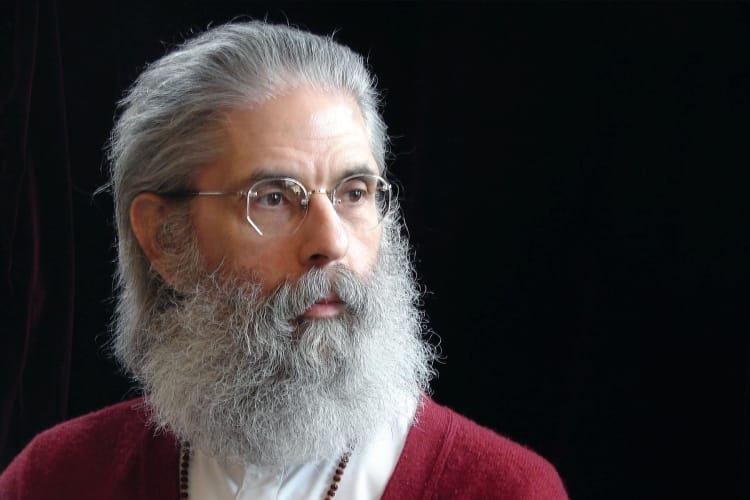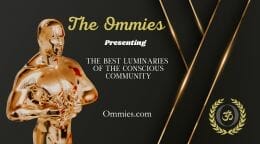The Heart and Science of Yoga – Leonard Perlmutter

OMTimes is honored to share a conversation with Leonard Perlmutter
Leonard Perlmutter – The Heart and Science of Yoga
Leonard Perlmutter, is one of the Western world’s leading pioneers in the introduction of meditation into the cultural firmament, having founded the American Meditation Institute (AMI) in 1996. AMI’s courses are now approved and accredited by the American Medical Association and the American Nurses Association. Perlmutter is also the author of an acclaimed book, The Heart and Science of Yoga: The American Meditation Institute’s Empowering Self-Care Program for a Happy, Healthy, Joyful Life, an encyclopedic guide to meditation and the Yoga Science that supports it.
Praised by such international medical luminaries as Drs. Dean Ornish, Mehmet Oz, Bernie Siegel, and Larry Dossey, this ultimate guidebook not only explains what to do, BUT WHY TO DO IT. It delves into Yoga Science, the eight-step method for managing the life force energy that propels us and connects us to the infinite power and creativity that is within and without us all. And the result of mastering it is the bliss and daily joy that comes from the realization of our connection.
A Q&A with Leonard Perlmutter
OMTimes: What first motivated you to learn about Yoga Science and meditation?
Leonard Perlmutter: I was always philosophically oriented, but like most of the students I teach today, I was also motivated by stress, pain, lack of focus, digestive problems and fear. Looking for help, I studied various religious and spiritual traditions. And in the process, I learned more about my birth religion of Judaism, as well as Christianity, Islam, Buddhism, Hinduism and Native American traditions. Then I discovered the perennial philosophy and science of Yoga, and its essential practice, meditation. It became clear to me that Yoga Science is the very heart of all those religions and spiritual paths I had been examining.
OMTimes: How did that exploration help you?
Leonard Perlmutter: When I learned Yoga Science is the world’s oldest form of mind/body medicine, that information made me respectful and curious. And when I actually began to practice Yoga Science, I immediately felt better–in mind, body, and spirit. From the first days of my study and practice, I understood that the ancient, ever new science of Yoga is a practical, common-sense blueprint for experiencing real happiness, health, and security.
OMTimes: What were the first things you learned in your new practice?
Leonard Perlmutter: I discovered that to benefit from the practice of Yoga Science, a person must be willing to use his or her own mind-body-sense complex as a laboratory in which to undertake ongoing scientific experiments. Then, in the midst of every relationship, the “Bridge of Yoga” is to be employed in order to discover and verify the Truth.
OMTimes: What is the “Bridge of Yoga?”
Leonard Perlmutter: Yoga means “union,” and the “Bridge of Yoga” is a metaphoric bridge in our lives that links our choices of outer actions to our own inner wisdom. In each and every Yoga Science experiment, one single hypothesis is set forth:?when we use the “Bridge of Yoga” to receive the Truth of our inner wisdom and then employ that Truth in thought, word and deed, we feel better, physically, mentally, emotionally and spiritually. Conversely, in these experiments we also learn that when we fail to use the “Bridge of Yoga,” and our actions conflict with inner wisdom, we experience stress, dis-ease and pain.
OMTimes: Can this practice benefit everyone?
Leonard Perlmutter: Yes, everyone who wants to work with it. Some people say, “Meditation is just not for me. I don’t need it.” But a growing body of respected clinical studies indicates a daily meditation practice can make life more rewarding and much less painful for everyone, in every stage of life. My teacher, Swami Rama of the Himalayas, was unequivocal in stating his opinion, “Meditation is a dire necessity.”
OMTimes: Can you explain precisely what meditation is?
Leonard Perlmutter: The word “meditation” comes from the Latin words meditari (to think, contemplate, or exercise the mind) and mederi (to heal, cure). It implies attending to or paying attention to something, to the exclusion of any other mental or physical stimulus.
To help demystify meditation, I often ask my classes, “What do you love to do?” Some students love walking in nature; some love gardening or business; some love eating, golf or tennis; some love their work, spouse, children or grandchildren. Regardless of what they claim to love, I explain that the common thread running through all their various loves is the experience of freely giving their complete, one-pointed, attention to someone or some thing. Attention, I suggest to them, is love.
Once they see the correlation between focusing their attention and experiencing love, I explain that meditation, like their loves, is simply the experience of consciously directing one’s complete attention to one object. The only difference is that when you’re meditating, the “loving experience” is not dependent on anything or anyone outside yourself. Your capacity to love does not depend on nature, a garden, work, food, golf, or a loved one. In meditation, you simply direct all your attention to a mantra–a word or series of words containing the name of the Supreme Reality (a.k.a., God).
OMTimes: What benefits can a person expect when he or she commits to a daily meditation practice?
Leonard Perlmutter: Focusing your attention for only one minute exclusively on the mantra can give you a taste of freedom from the mind’s stressful, habitual preferences. And there’s an additional bonus: with that one-minute investment, you’ve begun the acquisition of four powerful, life-enhancing skills. These skills are: 1. The capacity to be detached from any uninvited stimulus; 2. The ability to focus the mind’s one-pointed attention at will; 3. The development of greater intuitive discrimination; 4. The will power to do what is to be done and to not do what is not to be done.
Can you imagine how valuable these four meditation skills will be in helping you successfully handle all your duties and responsibilities? But there’s still more. The many unseen physical benefits of meditation are surprising and profound. Take its effect on the human brain, for example.
OMTimes: How does meditation affect the brain?
Leonard Perlmutter: Your brain is your body’s control center. Its nerve cells (neurons) send and receive electro-chemical signals. By these functions, your brain enables you to think, feel, remember, and perceive the world around you.
Until just a few years ago, neuroscientists believed that after childhood, your brain cells became hard-wired into relatively fixed circuits for life. But recent scientific studies tell a different story. We now know that your brain’s estimated 100 billion neural cells can re-form new circuits and patterns in response to life’s ever-changing experiences and demands. This physiological process is known as neuroplasticity. It is your brain’s potential to reorganize itself by creating new neural pathways that empower you to adapt to changing circumstances.
Research suggests that these and other changes translate into less stress and anxiety and a greater sense of wellbeing. And one recent study showed measurable brain tissue transformations after just eight weeks of regular meditation. Sit regularly for meditation and your everyday life experiences will begin to reflect the evenness of mind you experience during meditation. You’ll find it easier to let go of stressful thoughts, and you’ll be less burdened by unexpected or undesired circumstances, like traffic jams and annual medical checkups.
OMTimes: But surely neuroplasticity alone doesn’t solve physical problems. There must be other factors at work.
Leonard Perlmutter: Yes, there are. Meditation can also upgrade your mental software and operating system. Here’s how that happens. Although the mind is vast, only a small portion of the mind is conscious. For most of the moments of your life, the greater portion of the mind remains unconscious. The unconscious mind serves as the storehouse for your habits and attachments. It holds your memories, likes and dislikes, imaginations for the future and the information you deem essential to self-preservation. Consequently, it serves as the repository for your fear, anger and unfulfilled desires.
Yoga Science describes the character of the unconscious mind as being like that of wet sand. When a child playing at the beach presses an object into wet sand, an impression is created. Similarly, when you repeatedly give your attention to any thought, desire or emotion, that subtle object creates an impression, like an indentation in the topography of your unconscious mind. As you give continued attention to any thought, desire or emotion, the channel that is formed becomes deeper and deeper.
Your awareness (consciousness) always flows through the channel of least resistance. This means that the deepest, widest, most unobstructed channels in the unconscious mind become the software of your mind, the pathways through which your consciousness travels. These behavioral imprints can include your creative, healthy habits–and your destructive, unhealthy habits, as well.
Each of us has created deep channels through our previous attention, so we tend to think virtually the same thoughts, speak the same words and take similar actions every day. We are creating and recreating the software of our own mind through repeated attention to certain thoughts. In effect, these continued attachments determine all our choices and the consequences that flow from those choices.
OMTimes Magazine is one of the leading on-line content providers of positivity, wellness and personal empowerment. OMTimes Magazine - Co-Creating a More Conscious Reality









